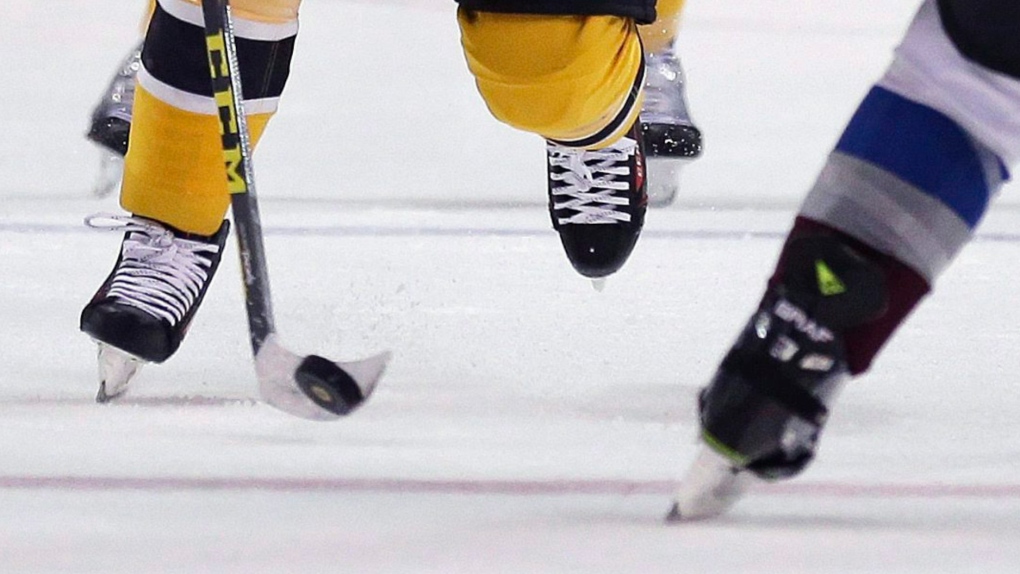Quebec study gains new insight into sexual abuse by coaches

The modus operandi of sports coaches who sexually abuse young athletes usually consists of six main stages, according to researchers at Université Laval, who were among the first to take a closer look at the problem.
The researchers identified some 50 strategies used by abusive coaches during each stage, for example when it comes to gaining the trust of a child or their parents.
“Our study really looked specifically at the strategies used by each coach," explained researcher Élisabeth St-Pierre. “We didn't know what strategies were used before or after a trainer committed a crime. And we saw that certain strategies were used much more often than others."
This research is based on an analysis of over 2,000 court judgments and newspaper articles concerning 120 cases of sexual assault committed by Canadian sports coaches against 331 athletes, mostly boys, between 1967 and 2020.
Analysis of the sample reveals that 133 girls and 198 boys were victims of a sexual assault by their coach. The average age of the athletes was 13.6. The average age of the coaches was 33.6. Over the years, 85.8 per cent of these adults committed more than one incident of abuse.
The study reveals an average of 2.8 young athlete victims for each coach. Witnesses were present at the time of the abuse in 21 per cent of cases, for example because the acts were committed as part of a "game." The average length of time the aggressors were active is 5.8 years. Finally, an average of 14.1 years elapsed between the first assault and the first report to the police.
The cases studied cover some 25 sports, demonstrating that the phenomenon does not just occur in the most popular sports.
“The aim (of the study) was to suggest avenues of prevention adapted to (the aggressors') modus operandi," said St-Pierre. “When you take into account the modus operandi and develop prevention strategies based on that, you develop prevention strategies that are going to be effective."
The researchers also hope that their study will make it possible to spot the warning signs before it's too late.
“We're a long way from the assailant hiding in the bushes and jumping on his victim at random," said St-Pierre. "It can take other forms, and it's important to know that.”
Surprisingly, the abusive coaches did not use any particular strategy to convince their victims to remain silent. Some youngsters said they kept quiet because they were ashamed, for fear of being excluded from their sport or losing the coach's attention, or because they didn't consider they had been assaulted.
Around 10 per cent of assaults involved international athletes. The fear of losing a coach or sponsors, while being at the height of their athletic career, may have silenced some athletes, the researchers said.
The study recommends educating athletes and parents about the characteristics of sexual assault in sport. The researchers also recommend clarifying the boundaries of the coach-athlete relationship by discouraging coaches from spending time alone with an athlete during activities outside the sporting context.
"You have to ask questions and take as much interest as possible in what your child is doing in sport," concluded St-Pierre.
The findings of this study were published in the scientific journal Frontiers in Psychology.
-----
In the event of harassment, neglect or violence in a sports environment, file a complaint here
- This report by The Canadian Press was first published in French on Dec. 7, 2023.
CTVNews.ca Top Stories

'A terrible tragedy': 4 dead in another multiple-fatality B.C. crash
A crash in Keremeos, B.C., Wednesday morning is the latest in a string of fatal collisions, this time claiming the lives of four people, Mounties say.
Biden forcefully declares he's staying in re-election race in major news conference
U.S. President Joe Biden used his highly anticipated news conference Thursday to deliver a forceful defence of his foreign and domestic policies, and batted away questions about his ability to serve another four years even as he flubbed a reference to Donald Trump in one of his first answers.
Trudeau says he still has 'full confidence' in Freeland, but has been talking to Carney
Prime Minister Justin Trudeau says he continues to have 'full confidence' in Deputy Prime Minister and Minister of Finance Chrystia Freeland, but he's also been talking to Mark Carney about entering federal politics.
'An avoidable tragedy': Calgary woman charged after dog dies in hot car
A Calgary woman is facing charges for the death of her dog, which died after being left in a hot car on Canada Day.
Oilers star engaged to marry girlfriend after proposal in Spain
Edmonton Oilers superstar Leon Draisaitl is engaged to be married. The 28-year-old centre proposed marriage to his girlfriend, actor Celeste Desjardins, who said yes. Both posted about the engagement Thursday to their Instagram accounts.
Benji Gregory, former child star on the '80s sitcom 'ALF,' dies at 46
Former child actor Benji Gregory, who played the young boy on the 1980s television sitcom 'ALF,' has died in suburban Phoenix. He was 46.
Mother of the 'miracle baby' found crawling by a highway faces a murder charge in older son's death
Three days after a 4-year-old boy's body was pulled from a southwest Louisiana lake, and two days after the child's 1-year-old brother was rescued while crawling beside an interstate highway, Louisiana authorities announced a murder charge against the children's mother.
Shelley Duvall, actress and iconic 'The Shining' heroine, has died
Shelley Duvall, the intrepid, Texas-born movie star whose wide-eyed, winsome presence was a mainstay in the films of Robert Altman and who co-starred in Stanley Kubrick's 'The Shining,' has died. She was 75.
McGill University on consequences for students, divesting after pro-Palestinian camp dismantled
McGill University says it hasn't ruled out expelling any students involved in the pro-Palestinian encampment on its campus.


































